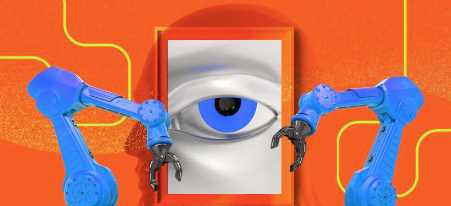Artificial intelligence has revolutionized the way we process and interpret data. One of the most exciting applications of AI is the generation of images from text, also known as an AI text to image generator. But how exactly does this technology work? In this blog, we will explore the science behind converting an AI text to image generator.
What is an AI Text to Image Generator?
An AI text to image generator is a computer program that generates images based on textual input. It uses natural language processing (NLP) and computer vision (CV) techniques to understand and interpret the text input and create an image that represents it. The generated image can be of anything, from a landscape to an object to a person.
How does it work?
An AI text to image generator uses a combination of deep learning and neural networks to generate images from text. The process involves several steps:
Text Input: The first step is to input the text into the system. This can be done by typing in the text or by using speech recognition technology.
Natural Language Processing (NLP): The text is then analyzed using NLP techniques to understand its meaning and context. The system uses algorithms to identify the objects, colors, and other features described in the text.
Computer Vision (CV): The system then uses CV techniques to create an image based on the information obtained from the NLP analysis. This involves identifying the shapes, colors, and textures required to create the image.
Neural Networks: The system then uses neural networks to refine the image and make it more realistic. This involves adjusting the brightness, contrast, and other parameters to make the image look more like a real photograph.
Output: Finally, the generated image is outputted by the system.
Training the System
Training an AI text to image generator requires a large amount of data. The system must be trained on a dataset of images and their corresponding textual descriptions. This data is used to train the neural network to recognize patterns and generate images that are similar to the ones in the dataset.
The dataset can be created manually or by using existing datasets that are available online. The quality of the dataset is critical to the performance of the AI text to image generator. A larger and more diverse dataset will result in better performance.
Applications of AI Text to Image Generators
AI text to image generators have several applications, including:
Creative Industries: AI text to image generators can be used in the creative industries, such as advertising, gaming, and entertainment. They can be used to create visual content for ads, games, and movies.
Product Design: AI text to image generators can be used in product design to create 3D models of products based on textual descriptions.
Architecture and Interior Design: AI text to image generators can be used to create architectural and interior design models based on textual descriptions.
Virtual Reality: AI text to image generators can be used to create realistic virtual environments based on textual descriptions.
Education: AI text to image generators can be used in education to create visual aids for teaching materials.
Challenges
Despite its many applications, AI text to image generators still face several challenges. The main challenge is to create images that are realistic and detailed. The system must be able to generate images that look like real photographs and include all the details described in the text.
Another challenge is the quality of the dataset. If the dataset is not large enough or diverse enough, the system may generate images that are not accurate or realistic.




Leave Comment